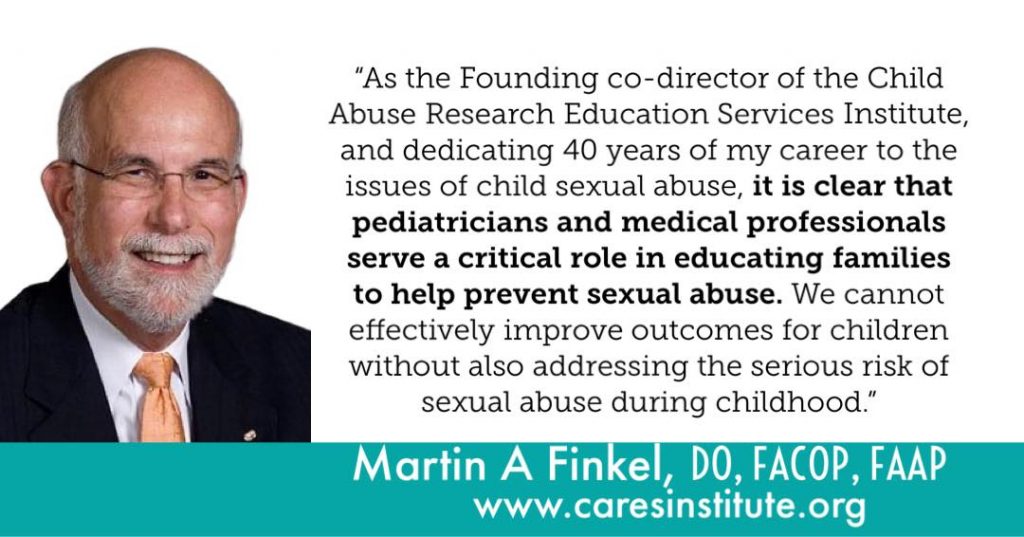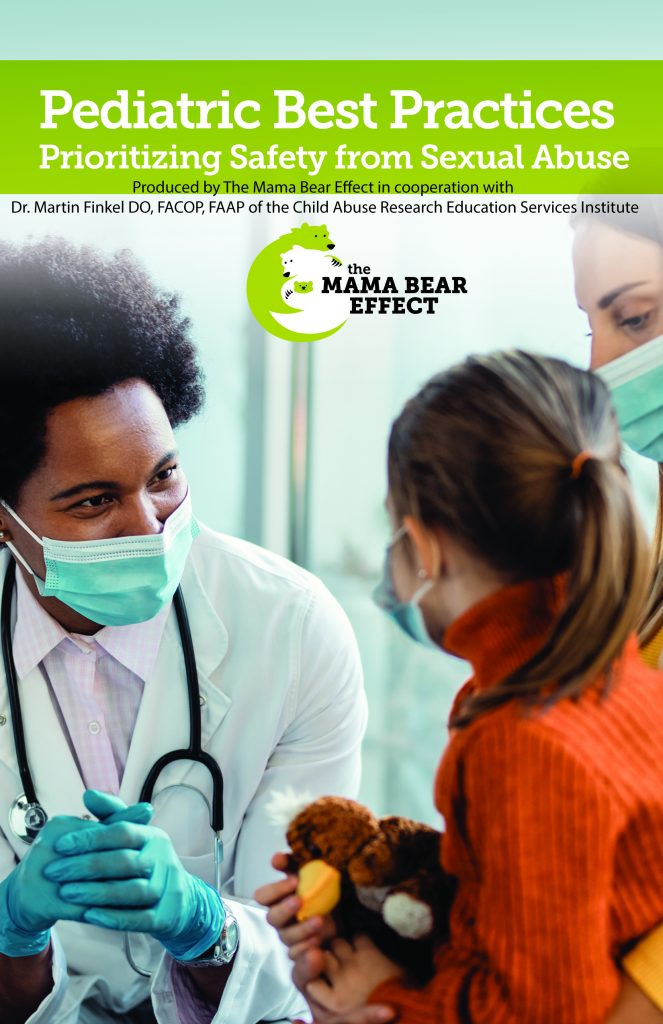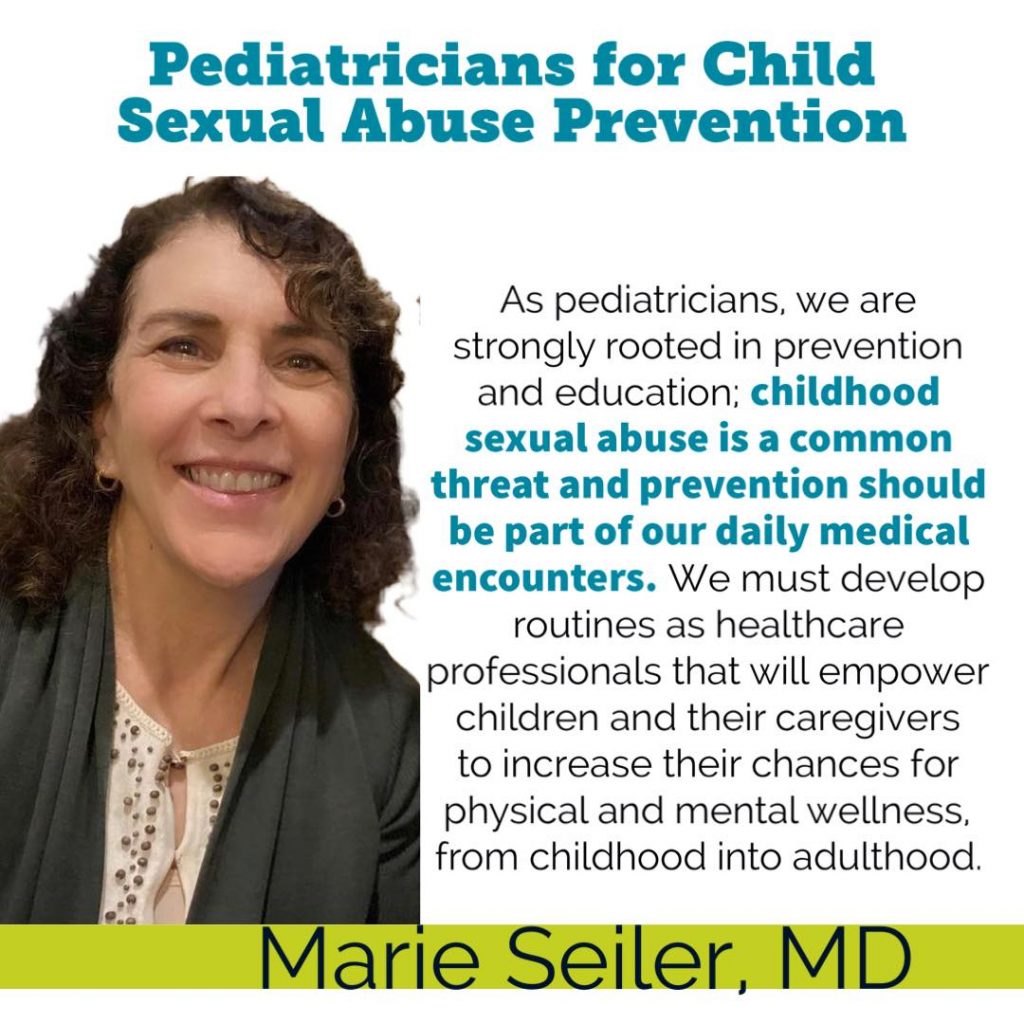Child sexual abuse is a public health epidemic
that necessitates a commitment of key leaders in health, community, child development, and public safety. The trauma of sexual abuse extends far beyond the assault(s), as the impact of stress disrupts brain development and negatively affects daily function, often leading to a myriad of reasons why survivors seek medical and psychological treatment in childhood and throughout their adult lives. We can prevent countless harms and improve health outcomes through awareness, education, and support resources.
Symptoms of stress/trauma that may be presented at a medical appointment:
| Digestive Issues | Headaches/Migraines | Insomnia | Bedwetting |
| Anxiety/Panic Attacks | Signs of ADHD | Nightmares | Eating Disorders |
| Self Harm | Depression | Stress-induced Dermatitis | OCD Behaviors |
| Urinary Tract Infection | Aggression | Atypical Sexual Behaviors | Submissive Behavior |
Parents and caregivers are anxious to learn how to keep children safe from sexual abuse, but find minimal resources to learn and take proactive steps to reduce risk.
92% of parents want pediatricians to talk about child sexual abuse prevention*
*2023 Parental & Caregiver Perspectives on Child Sexual Abuse Prevention


Educating Parents Doesn’t Have to Be Daunting
Many parents may feel uncomfortable using proper words for genitalia, struggler to understand what behaviors are typical for children, and are unsure how to talk to their children about sexual abuse (or Body Safety, as we call it). With proper evidence-based resources, parents will not only feel comfortable talking about body safety, they’ll see a number of benefits beyond safety.
Empowering body safety talks can improve communication and strengthen the bond between children and parents. Children that are supported in bodily autonomy grow in self confidence and have a stronger understanding of consent for others. Even if a child never experiences inappropriate or abusive behavior, a family that embraces body safety messages will help their children become more resilient, respectful, and responsible in their own lives.
5 Simple Body Safety Messages to Share During an Exam
- Using proper terminology for genitalia so children can communicate clearly and without embarrassment. If a child does experience sexual abuse, use of proper terminology is very helpful to an investigation and potential trial.
- Teaching children which parts of the human body are private – meaning they are not meant to be shared with others – the parts covered by bathing suits or underwear. Promoting privacy within the family – providing and respecting privacy when people are dressing/using the bathroom creates boundaries that children can grasp and follow, reducing risk for abuse. Encourage children to manage personal self care as much as possible – wiping themselves after using the toilet, washing their body in the bath, and encouraging parents to minimize the number of people involved in intimate care of children: diaper changes, baths, changing clothes, putting them to bed.
- Establishing a culture of consent – not forcing children to be affectionate or touched when it is not necessary, this will be especially helpful between siblings/peers. Listening to children when they say “no” and speaking up for children when others are not respecting their personal boundaries or space.
- Definging appropriate and inappropriate (or “okay/not okay”) touches and behaviors. During an exam it may be necessary to inspect a child’s genitalia or more private areas of their body – chest, stomach, even their mouth), taking the time to explain that this is being done with their parent/caregiver or other adult present for their safety, and why it is necessary can help children distinguish safe versus unsafe situations.
- Discouraging secrets which can be used to groom children and make them feel complicit in abuse. The idea of “happy secrets” or “safe secrets” can still create confusion, instead promote that surprises are okay because they are only kept quiet for a short time.
Building a Body Safety Circle™

Children are safest when all the adults in their lives are educated and committed to protecting them from sexual abuse. It is not enough for parents alone to be protect their children, it is essential that other adults – extended family, caregivers, youth leaders, parents of their friends, etc. also understand the issues and how to reduce risk.
70-80% of abuse occurs within a home*
*Sexual Assault of Young Children as Reported to Law Enforcement
Knowing the majority of sexual abuse occurs within the home of the victim and/or perpetrator, it is invaluable that parents understand that there is risk within their own homes – between siblings, peers, a spouse, romantic partner, or other adult, or at the home of extended family and friends.
Children may not feel comfortable disclosing abuse to their parent, or they may need to talk to someone when a parent is not easily accessible. Choosing five trusted adults to be part of a Body Safety Circle, to be educated and prepared to handle a question or concern relating to body safety will not only increase a child’s exposure to body safety messages, it can also increase likelihood that a child will feel comfortable to disclose abuse sooner.
Regular Body Safety Check-ins
 Disclosing sexual abuse can be very difficult for a person of any age. It can be especially confusing for a child who may not entirely realize that a situation has become inappropriate or abusive. Increasing communication between children and trusted caregivers is an important step to giving children the opportunity to talk about situations that may concern them.
Disclosing sexual abuse can be very difficult for a person of any age. It can be especially confusing for a child who may not entirely realize that a situation has become inappropriate or abusive. Increasing communication between children and trusted caregivers is an important step to giving children the opportunity to talk about situations that may concern them.
Parents and caregivers can help encourage communication from children by taking the time to assess how they react to situations or information that causes distress. A parent that struggles to control their negative emotions may, inadvertently, discourage their child from disclosing something they fear may cause an unwanted reaction. It may take reflection and practice for parents to prepare themselves for a possible disclosure of abuse – knowing that a calm, supportive response is best.
A body safety check-in should be done at a quiet time without distraction or in the presence of others where a child can feel comfortable to talk and feel heard. Ideally, this should be done once each month or after a child has spent time alone with others – spending time with extended family, at a camp, or playdate, for example.
Adult Education Beyond Child Empowerment
There are numerous steps that parents and adults can take to reduce risk of abuse so that a child’s body safety education is never put to the test. Whether a child is an infant to toddler, grade school, or middle to high school, or are living with disabilities, there are age-appropriate ways to protect and empower children against sexual abuse.
- Minimizing one-on-one situations and improving supervision can decrease opportunity for abuse to occur.
- Understanding the grooming behaviors that may occur before abuse to proactively prevent potentially dangerous situation.
- Knowing how to speak up when someone’s actions or a situation is inappropriate or unsafe.
- Vetting schools and youth serving organizations on their policies and practices to reduce risk of abuse.
Other Ways to Promote Body Safety Awareness
- Provide access to educational pamphlets in the waiting area and exam room
- Display body safety posters and books for families to read, body safety coloring pages for children
- Share abuse prevention resources on the company website, newsletters, and end-of-visit take-home papers
- Post abuse prevention information on social media sites (follow us on Facebook & Instagram)
- Connect with a local child advocacy center or abuse prevention organization to host an abuse prevention seminar in-person or on-line
- Attend local health fairs and community events to share resources with families
Full Video: Dr Finkel & Dr Seiler
Order a Pediatric Kit





